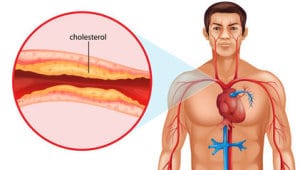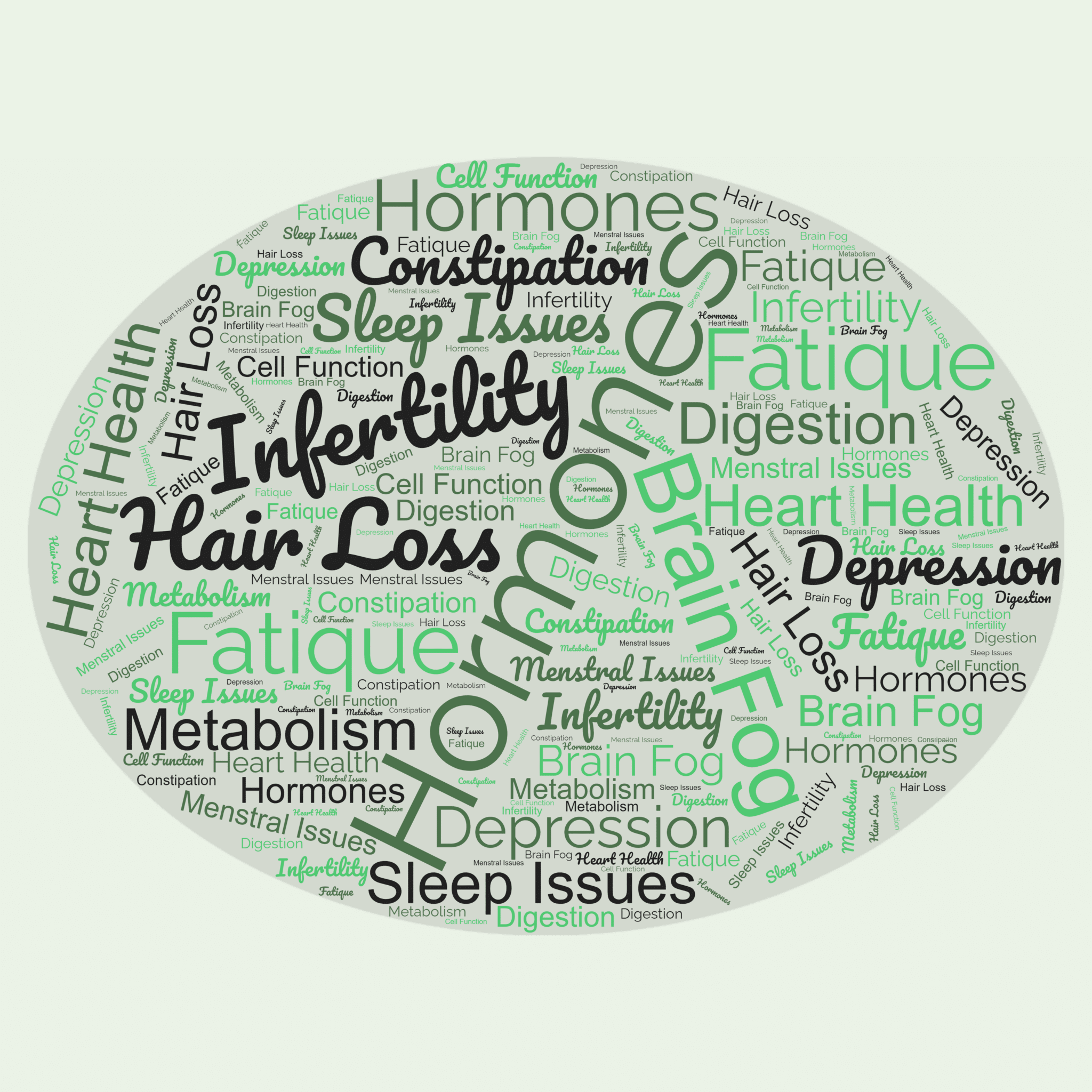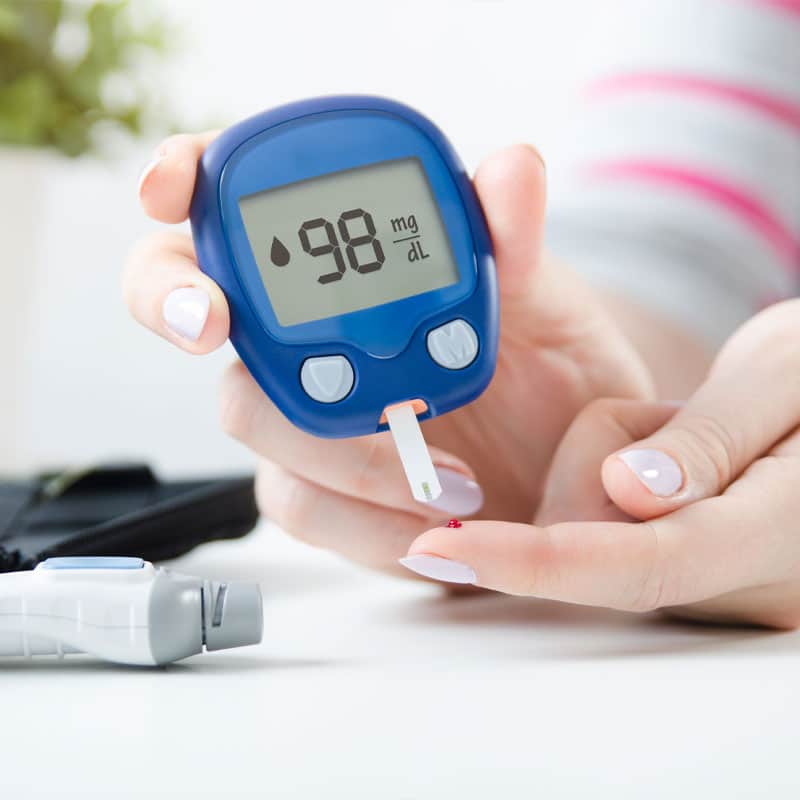Metabolic syndrome, also called insulin resistance syndrome, dysmetabolic syndrome, or Syndrome X, refers to a group of risk factors that increase your risk of developing diabetes, occurrence of stroke, or heart disease. There are various symptoms of metabolic syndrome. Approximately 35 percent of Americans have metabolic syndrome and the risk for developing this syndrome increases with age. In fact, by the time a person reaches 60 years of age, the risk of developing metabolic syndrome increases to 50 percent.
Symptoms of Metabolic Syndrome
The definition of metabolic syndrome requires that a person have three or more of the following traits:
- High Blood Pressure – Increased blood pressure higher than 130/85 is a sign.
- Large Waistline – A waistline larger than 35 inches for women or 40 inches for men suggests metabolic syndrome.
- Decreased HDL Levels – Low HDL cholesterol (good cholesterol) can signal metabolic syndrome. For women, HDL levels should be greater than 50 milligrams per deciliter. In men, greater than 40 milligrams per deciliter is ideal.
- Elevated Fasting Glucose Levels – Elevated fasting glucose levels higher than 100 milligrams per deciliter can suggest the presence of metabolic syndrome.
- Elevated Triglycerides – High triglyceride levels over 150 milligrams per deciliter, can be an indication of metabolic syndrome.
- Metabolic syndrome comes with high levels of glucose and insulin in the blood stream which leads to all sorts of health issues including:
- Kidney Function – Metabolic syndrome reduces the kidneys’ ability to remove sodium and salt from the body, which can increase the risk of high blood pressure, stroke, and heart disease.
- Triglyceride Levels – Metabolic syndrome increases triglyceride levels and in turn promotes the development of heart disease.
- Blood Clots – Because metabolic syndrome damages the lining of one’s arteries, the risk of developing blood clots, stroke or heart attack increases.
- Diabetes – Metabolic syndrome involves insulin resistance whereby the body suffers with poor insulin and glucose metabolism. This increases the risk of developing type 2 diabetes.
- Fatty Liver – Fatty liver occurs when the body stores excess fat in around the liver. Left untreated, fatty liver can lead to inflammation of your liver (nonalcoholic steatohepatitis), cirrhosis of the liver (scarring), and eventually liver failure.
Risk Factors for Metabolic Syndrome
Metabolic syndrome is diagnosed in both men and women and the risk of developing this condition increases with age.

- Certain ethnic groups, Asians and African-Caribbean are at a higher risk of developing metabolic syndrome.
- Individuals who have been diagnosed with diabetes or have a strong family history of diabetes.
- Individuals with other features of insulin resistance, such as darkened skin on the back of the neck or underarms, skin tags on the neck
- Obese individuals with increased fat around the abdomen or waist.
Metabolic syndrome is linked to being overweight or obese, lack of physical activity, and insulin resistance. Furthermore, a personal history of gestational diabetes or a family history of type 2 diabetes, increases the risk of developing metabolic syndrome. Advancing age increase the risk as well. Finally, a person’s race and/or the presence of other health conditions (cardiovascular disease, polycystic ovary syndrome, and non-alcoholic fatty liver disease pose a greater risk) can increase the risk of metabolic syndrome.
Reducing Risk of Metabolic Syndrome

- Decrease Alcohol Consumption – Limit your alcohol consumption to no more than one drink daily if you are a woman and two drinks daily if you are a man.
- Eat a Healthy Diet – A healthy diet filled with fresh vegetables, fruits, lean protein, and healthy fats reduces systemic inflammation, lowers cholesterol and glucose levels and keep blood pressure in control. Limit the amount of saturated fat, sugar, and sodium in your diet.
- Regular Exercise – Experts recommend getting at least 150 minutes of exercise each week. This can be broken down into 15 minute sessions throughout the week. What’s important is to just get moving and increase the heart rate. Examples of exercise include brisk walking, aerobics, cycling, and swimming.
- Say No to Tobacco – There are many wonderful programs out there that can help you kick the habit.
Treating Metabolic Syndrome
Learning how to control metabolic syndrome can help reduce the risk of developing type 2 diabetes or cardiovascular disease. The best way to treat this condition is to lose weight, increase physical activity levels, and eat a healthy diet.
Our team of integrative providers understand the intricacies involved with reversing metabolic syndrome. We work with you to create a customized treatment plan to help you lose weight, cultivate an optimal exercise routine and consume a healthy diet to reverse metabolic syndrome or decrease your risk of developing it.























